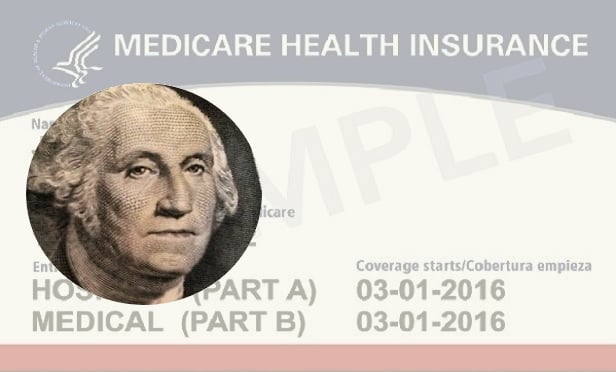 Medicare's voluntary Medicare Part A premium revenue increased 7.5 percent between 2018 and 2019, to $3.9 billion.(Credit: CMS)
Medicare's voluntary Medicare Part A premium revenue increased 7.5 percent between 2018 and 2019, to $3.9 billion.(Credit: CMS)
The Medicare Part A inpatient hospital care insurance program lost $5.8 billion in 2019 on $323 billion in revenue.
That compares with a loss of $1.6 billion on $303 billion in revenue in 2018, according to the new Medicare Trustees Report.
The program's main source of revenue, payroll taxes, rose 6.3 percent, to $285 billion, but low interest rates cut interest income and other investment income to $9 billion, from $9.8 billion.
Resources
- Medicare Trustees Report documents are available here.
- Social Security Trustees Report documents are available here.
Benefits payments climbed 6.5 percent, to $323 billion.
Most Americans qualify for "free" Medicare Part A coverage at retirement, by making payroll tax contributions during their working years, or being married to someone else who's contributed to the program.
But some Americans, including some immigrants, and never-married people who have not spent much time earning wages, have to pay premiums for Medicare Part A coverage.
Medicare's voluntary Medicare Part A premium revenue increased 7.5 percent between 2018 and 2019, to $3.9 billion.
The Medicare Part A trust fund depletion rate
The trustees predict that the trust fund could be depleted in 2026.
If the trust fund were empty, current revenue could cover more than 90 percent of the Medicare Part A program's costs in 2026.
Over a 75-year period, however, the program's actuarial deficit has narrowed to 0.76 percent of taxable payroll, from 0.91 percent in the report released a year ago.
The actuarial deficit gap narrowed partly because 2019 costs were lower than expected, and partly because a change in the demographic factors used to calculate future benefits obligations, the trustees say.
The Medicare program also offers the Part B physician and outpatient services program. Managers of the program pay for it with payroll taxes and premiums, rather than with a trust fund.
Social Security
The trustees of the Social Security retirement income and disability income trust funds have released a similar trustees report for Social Security.
That report shows that Social Security posted a gain of $6.5 billion in 2019 on $919 billion in revenue.
Net payroll tax revenue climbed 12 percent, to $805 billion, but net interest income fell to $78 billion, from $81 billion.
Scheduled benefits increased to $903 billion, from $845 billion.
Life in 2095
The Social Security trustees try to analyze the solvency of the programs from now through 2095, and they include some detailed projections about what life will be like in 2095.
They assume, for example, that the Medicare and Social Security trust funds will combine for about $2.5 trillion in payroll tax revenue and other non-interest income, when expressed in 2020 dollars.
They also assume that the programs will cover about 178 million to 283 million workers in 2095 and pay Social Security benefits to about 64 million people.
They assume the age-adjusted death rate per 100,000 people age 65 and older will fall to 2,619 in 2095, from about 4,365 this year.
Read more:
- Social Security, Medicare spending will drive increases in federal debt over next decade
- Average Medicare recipient pays more than $5,000 annually in out-of-pocket costs
- Taxpayers overpaying billions for Medicare Advantage
© 2025 ALM Global, LLC, All Rights Reserved. Request academic re-use from www.copyright.com. All other uses, submit a request to [email protected]. For more information visit Asset & Logo Licensing.







